![美国历史(英文版) [History of The United States]](https://pic.qciss.net/11221283/rBEQYVGB8d4IAAAAAAwLpEi2SPYAAAJhwN8OQAADAu8365.jpg)

具体描述
编辑推荐
出国留学SAT考试参考读本,配套纯正美语朗读免费下载内容简介
《美国历史(英文版)》是美国著名历史学家比尔德为美国中学生写作的一本历史读本,曾在美国学校使用并受到欢迎。全书根据美历史的不同阶段,划分为七个部分,从美洲大陆的发现到世界大战,共29篇。每一篇章归纳出若干知识点,便于学习理解。章节后面附有总结与讨论话题,引导读者进一步探讨与发现。全英文文本,配合下载的朗读文件,对国内读者全提升英语更有很大帮助。
作者简介
继哈佛大学著名历史学家钱宁的《美国学生历史》(英汉双语版)出版问市后,受到众多读者欢迎,不少读者期望能买到英文原版关于美国历史的教材,此书正是为满足这部分读者纯英文阅读的需求。这本全英文版的《美国历史》由美国著名历史学家比尔德编写,以西方人的视角,深入浅出地介绍了从殖民地时期到世界大战期间美国历史上的重大事件与文明发展。本书按不同历史时期,分知识点,一一讲述,便于理解记忆。为使读者更好地理解和掌握各章的重点和难点,每章末尾还附有练习题和思考题。文中还配有相应的插图,便于对不同地域和各个时期人物及事件有更直观感受。通过阅读本书,能理清美国历史发展脉络,获得对美国历史全景式认知,从而能更好地了解美国这个社会和文化多元的国家。
本英文版适合高中以上读者阅读使用,对于备考SAT的学生应该很有帮助。全书提供配套英文朗读下载,在提升阅读水平的同时练习英文听力与口语。对于普通英语学习爱好者,也是一本很好的了解美国历史的学习读本。作者在前言中,对此书的特点作了如下介绍:
It is not upon negative features, however, that we rest our case. It is rather upon constructive features.
First. We have written a topical, not a narrative, history. We have tried to set forth the important aspects, problems, and movements of each period, bringing in the narrative rather by way of illustration.
Second. We have emphasized those historical topics which help to explain how our nation has come to be what it is to-day.
Third. We have dwelt fully upon the social and economic aspects of our history, especially in relation to the politics of each period.
Fourth. We have treated the causes and results of wars, the problems of financing and sustaining armed forces, rather than military strategy. These are the subjects, which belong to a history for civilians. These are matters which civilians can understand-matters which they must understand, if they are to play well their part in war and peace.
Fifth. By omitting the period of exploration, we have been able to enlarge the treatment of our own time. We have given special attention to the history of those current questions which must form the subject matter of sound instruction in citizenship.
Sixth. We have borne in mind that America, with all her unique characteristics, is a part of a general civilization. Accordingly we have given diplomacy, foreign affairs, world relations, and the reciprocal influences of nations their appropriate place.
Seventh. We have deliberately aimed at standards of maturity.
The study of a mere narrative calls mainly for the use of the memory. We have aimed to stimulate habits of analysis, comparison, association, reflection, and generalization-habits calculated to enlarge as well as inform the mind. We have been at great pains to make our text clear, simple, and direct; but we have earnestly sought to stretch the intellects of our readers- to put them upon their mettle. Most of them will receive the last of their formal instruction in the high school. The world will soon expect maturity from them. Their achievements will depend upon the possession of other powers than memory alone. The effectiveness of their citizenship in our republic will be measured by the excellence of their judgment as well as the fullness of their information.
内页插图
精彩书评
查尔斯·A·比尔德,美国著名历史学家,去世于1948年。他写作的《美国文明的兴起》一书,被商务印书馆翻译出版并选入“汉译名著”系列。Charles Austin Beard (November 27, 1874-September 1, 1948) was an American historian. He published hundreds of monographs, textbooks and interpretive studies in both history and political science. His works included radical re-evaluation of the Founding Fathers of the United States, whom he believed were more motivated by economics than by philosophical principles.
Mary Ritter Beard (August 5, 1876-August 14, 1958) was an influential American historian and
archivist , who played an important role in the women's suffrage movement and was a lifelong advocate for social justice through educational and activist roles in both the labor and woman's rights movements. She wrote several books on women's role in history including On Understanding Women (1931), America Through Women's Eyes (1933) and Woman As Force In History: A Study in Traditions and Realities (1946). In addition, she collaborated with her husband, eminent historian Charles Austin Beard on several distinguished works, most notably The Rise of American Civilization (1927).
目录
PART I THE COLONIAL PERIOD1 THE GREAT MIGRATION TO AMERICA
The Agencies of American Colonization
The Colonial Peoples
The Process of Colonization
2 COLONIAL AGRICULTURE, INDUSTRY, AND COMMERCE
The Land and the Westward Movement
Industrial and Commercial Development
3 SOCIAL AND POLITICAL PROGRESS
The Leadership of the Churches
Schools and Colleges
The Colonial Press
The Evolution in Political Institutions
4 THE DEVELOPMENT OF COLONIAL NATIONALISM
Relations with the Indians and the French
The Effects of Warfare on the Colonies
Colonial Relations with the British Government
Summary of the Colonial Period
PART II CONFLICT AND INDEPENDENCE
5 THE NEW COURSE IN BRITISH IMPERIAL POLICY
George III and His System
George III s Ministers and Their Colonial Policies
Colonial Resistance Forces Repeal
Resumption of British Revenue and Commercial Policies
Renewed Resistance in America
Retaliation by the British Government
From Reform to Revolution in America
6 THE AMERICAN REVOLUTION
Resistance and Retaliation
American Independence
The Establishment of Government and the New Allegiance
Military Affairs
The Finances of the Revolution
The Diplomacy of the Revolution
Peace at Last
Summary of the Revolutionary Period
PART III FOUNDATIONS OF THE UNION AND NATIONAL POLITICS
7 THE FORMATION OF THE CONSTITUTION
The Promise and the Difficulties of America
The Calling of a Constitutional Convention
The Framing of the Constitution
The Struggle over Ratification
8 THE CLASH OF POLITICAL PARTIES 115
The Men and Measures of the New Government
The Rise of Political Parties
Foreign Influences and Domestic Politics
9 THE JEFFERSONIAN REPUBLICANS IN POWER 132
Republican Principles and Policies
The Republicans and the Great West
The Republican War for Commercial Independence
The Republicans Nationalized
The National Decisions of Chief Justice Marshall
Summary of the Union and National Politics
PART IV THE WEST AND JACKSONIAN DEMOCRACY
1 THE FARMERS BEYOND THE APPALACHIANS 155
Preparation for Western Settlement
The Western Migration and New States
The Spirit of the Frontier
The West and the East Meet
11 JACKSONIAN DEMOCRACY 17
The Democratic Movement in the East
The New Democracy Enters the Arena
The New Democracy at Washington
The Rise of the Whigs
The Interaction of American and European Opinion
12 THE MIDDLE BORDER AND THE GREAT WEST 194
The Advance of the Middle Border
On to the Pacific-Texas and the Mexican War
The Pacific Coast and Utah
Summary of Western Development and National Politics
PART V SECTIONAL CONFLICT AND RECONSTRUCTION
13 THE RISE OF THE INDUSTRIAL SYSTEM 211
The Industrial Revolution
The Industrial Revolution and National Politics
14 THE PLANTING SYSTEM AND NATIONAL POLITICS 226
Slavery-North and South
Slavery in National Politics
The Drift of Events toward the Irrepressible Conflict
15 THE CIVIL WAR AND RECONSTRUCTION 245
The Southern Confederacy
The War Measures of the Federal Government
The Results of the Civil War
Reconstruction in the South
Summary of the Sectional Conflict
PART VI NATIONAL GROWTH AND WORLD POLITICS
16 THE POLITICAL AND ECONOMIC EVOLUTION OF THE SOUTH 27
The South at the Close of the War
The Restoration of White Supremacy
The Economic Advance of the South
17 BUSINESS ENTERPRISE AND THE REPUBLICAN PARTY 285
Railways and Industry
The Supremacy of the Republican Party (1861-85)
The Growth of Opposition to Republican Rule
18 THE DEVELOPMENT OF THE GREAT WEST 3
The Railways As Trail Blazers
The Evolution of Grazing and Agriculture
Mining and Manufacturing in the West
The Admission of New States
The Influence of the Far West on National Life
19 DOMESTIC ISSUES BEFORE THE COUNTRY (1865-1897) 322
The Currency Question
The Protective Tariff and Taxation
The Railways and Trusts
The Minor Parties and Unrest
The Sound Money Battle of 1896
Republican Measures and Results
2 AMERICA A WORLD POWER (1865-19) 34
American Foreign Relations (1865-98)
Cuba and the Spanish War
American Policies in the Philippines and the Orient
Summary of National Growth and World Politics
PART VII PROGRESSIVE DEMOCRACY AND THE WORLD WAR
21 THE EVOLUTION OF REPUBLICAN POLICIES (19-1913) 362
Foreign Affairs
Colonial Administration
The Roosevelt Domestic Policies
Legislative and Executive Activities
The Administration of President Taft
Progressive Insurgency and the Election of 1912
22 THE SPIRIT OF REFORM IN AMERICA 382
An Age of Criticism
Political Reforms
Measures of Economic Reform
23 THE NEW POLITICAL DEMOCRACY 395
The Rise of the Woman Movement
The National Struggle for Woman Suffrage
24 INDUSTRIAL DEMOCRACY 4
Cooperation between Employers and Employees
The Rise and Growth of Organized Labor
The Wider Relations of Organized Labor
Immigration and Americanization
25 PRESIDENT WILSON AND THE WORLD WAR 418
Domestic Legislation
Colonial and Foreign Policies
The United States and the European War
The United States at War
The Settlement at Paris
Summary of Democracy and the World War
精彩书摘
CHAPTER 1 THE GREAT MIGRATION TO AMERICAThe tide of migration that set in toward the shores of North America during the early years of the seventeenth century was but one phase in the restless and eternal movement of mankind upon the surface of the earth. The ancient Greeks flung out their colonies in every direction, westward as far as Gaul, across the Mediterranean, and eastward into Asia Minor, perhaps to the very confines of India. The Romans, supported by their armies and their government, spread their dominion beyond the narrow lands of Italy until it stretched from the heather of Scotland to the sands of Arabia. The Teutonic tribes, from their home beyond the Danube and the Rhine, poured into the empire of the C?sars and made the beginnings of modern Europe. Of this great sweep of races and empires the settlement of America was merely a part. And it was, moreover, only one aspect of the expansion which finally carried the peoples, the institutions, and the trade of Europe to the very ends of the earth.
In one vital point, it must be noted, American colonization differed from that of the ancients. The Greeks usually carried with them affection for the government they left behind and sacred fire from the altar of the parent city; but thousands of the immigrants who came to America disliked the state and disowned the church of the mother country. They established compacts of government for themselves and set up altars of their own. They sought not only new soil to till but also political and religious liberty for themselves and their children.
The Agencies of American Colonization
It was no light matter for the English to cross three thousand miles of water and found homes in the American wilderness at the opening of the seventeenth century. Ships, tools, and supplies called for huge outlays of money. Stores had to be furnished in quantities sufficient to sustain the life of the settlers until they could gather harvests of their own. Artisans and laborers of skill and industry had to be induced to risk the hazards of the new world. Soldiers were required for defense and mariners for the exploration of inland waters. Leaders of good judgment, adept in managing men, had to be discovered. Altogether such an enterprise demanded capital larger than the ordinary merchant or gentleman could amass and involved risks more imminent than he dared to assume. Though in later days, after initial tests had been made, wealthy proprietors were able to establish colonies on their own account, it was the corporation that furnished the capital and leadership in the beginning.
The Trading Company.-English pioneers in exploration found an instrument for colonization in companies of merchant adventurers, which had long been employed in carrying on commerce with foreign countries. Such a corporation was composed of many persons of different ranks of society-noblemen, merchants, and gentlemen-who banded together for a particular undertaking, each contributing a sum of money and sharing in the profits of the venture. It was organized under royal authority; it received its charter, its grant of land, and its trading privileges from the king and carried on its operations under his supervision and control. The charter named all the persons originally included in the corporation and gave them certain powers in the management of its affairs, including the right to admit new members. The company was in fact a little government set up by the king. When the members of the corporation remained in England, as in the case of the Virginia Company, they operated through agents sent to the colony. When they came over the seas themselves and settled in America, as in the case of Massachusetts, they became the direct government of the country they possessed. The stockholders in that instance became the voters and the governor, the chief magistrate.
Four of the thirteen colonies in America owed their origins to the trading corporation. It was the London Company, created by King James I, in 1606, that laid during the following year the foundations of Virginia at Jamestown. It was under the auspices of their West India Company, chartered in 1621, that the Dutch planted the settlements of the New Netherland in the valley of the Hudson. The founders of Massachusetts were Puritan leaders and men of affairs whom King Charles I incorporated in 1629 under the title: "The governor and company of the Massachusetts Bay in New England." In this case the law did but incorporate a group drawn together by religious ties. "We must be knit together as one man," wrote John Winthrop, the first Puritan governor in America. Far to the south, on the banks of the Delaware River, a Swedish commercial company in 1638 made the beginnings of a settlement, christened New Sweden; it was destined to pass under the rule of the Dutch, and finally under the rule of William Penn as the proprietary colony of Delaware.
In a certain sense, Georgia may be included among the "company colonies." It was, however, originally conceived by the moving spirit, James Oglethorpe, as an asylum for poor men, especially those imprisoned for debt. To realize this humane purpose, he secured from King George II, in 1732, a royal charter uniting several gentlemen, including himself, into "one body politic and corporate," known as the "Trustees for establishing the colony of Georgia in America." In the structure of their organization and their methods of government, the trustees did not differ materially from the regular companies created for trade and colonization. Though their purposes were benevolent, their transactions had to be under the forms of law and according to the rules of business.
……
前言/序言
As things now stand, the course of instruction in American history in our public schools embraces three distinct treatments of the subject. Three separate books are used. First, there is the primary book, which is usually a very condensed narrative with emphasis on biographies and anecdotes.Second, there is the advanced text for the seventh or eighth grade, generally speaking, an expansion of the elementary book by the addition of forty or fifty thousand words. Finally, there is the high school manual. This, too, ordinarily follows the beaten path, giving fuller accounts of the same events and characters. To put it bluntly, we do not assume that our children obtain permanent possessions from their study of history in the lower grades. If mathematicians followed the same method, high school texts on algebra and geometry would include the multiplication table and fractions.
There is, of course, a ready answer to the criticism advanced above. It is that teachers have learned from bitter experience how little history their pupils retain as they pass along the regular route. No teacher of history will deny this. Still it is a standing challenge to existing methods of historical instruction. If the study of history cannot be made truly progressive like the study of mathematics, science, and languages, then the historians assume a grave responsibility in adding their subject to the already overloaded curriculum. If the successive historical texts are only enlarged editions of the first text-more facts, more dates, more words-then history deserves most of the sharp criticism which it is receiving from teachers of science, civics, and economics.
In this condition of affairs we find our justification for offering a new high school text in American history. Our first contribution is one of omission. The time-honored stories of exploration and the biographies of heroes are left out. We frankly hold that, if pupils know little or nothing about Columbus, Cortes, Magellan, or Captain John Smith by the time they reach the high school, it is useless to tell the same stories for perhaps the fourth time. It is worse than useless. It is an offense against the teachers of those subjects that are demonstrated to be progressive in character.
In the next place we have omitted all descriptions of battles. Our reasons for this are simple. The strategy of a campaign or of a single battle is a highly technical, and usually a highly controversial, matter about which experts differ widely. In the field of military and naval operations most writers and teachers of history are mere novices. To dispose of Gettysburg or the Wilderness in ten lines or ten pages is equally absurd to the serious student of military affairs. Any one who compares the ordinary textbook account of a single Civil War campaign with the account given by Ropes, for instance, will ask for no further comment. No youth called upon to serve our country in arms would think of turning to a high school manual for information about the art of warfare. The dramatic scene or episode, so useful in arousing the interest of the immature pupil, seems out of place in a book that deliberately appeals to boys and girls on the very threshold of life's serious responsibilities.
It is not upon negative features, however, that we rest our case. It is rather upon constructive features.
First. We have written a topical, not a narrative, history. We have tried to set forth the important aspects, problems, and movements of each period, bringing in the narrative rather by way of illustration.
Second. We have emphasized those historical topics which help to explain how our nation has come to be what it is to-day.
Third. We have dwelt fully upon the social and economic aspects of our history, especially in relation to the politics of each period.
Fourth. We have treated the causes and results of wars, the problems of financing and sustaining armed forces, rather than military strategy. These are the subjects which belong to a history for civilians. These are matters which civilians can understand-matters which they must understand, if they are to play well their part in war and peace.
Fifth. By omitting the period of exploration, we have been able to enlarge the treatment of our own time. We have given special attention to the history of those current questions which must form the subject matter of sound instruction in citizenship.
Sixth. We have borne in mind that America, with all her unique characteristics, is a part of a general civilization. Accordingly we have given diplomacy, foreign affairs, world relations, and the reciprocal influences of nations their appropriate place.
Seventh. We have deliberately aimed at standards of maturity. The study of a mere narrative calls mainly for the use of the memory. We have aimed to stimulate habits of analysis, comparison, association, reflection, and generalization-habits calculated to enlarge as well as inform the mind.
We have been at great pains to make our text clear, simple, and direct; but we have earnestly sought to stretch the intellects of our readers-to put them upon their mettle. Most of them will receive the last of their formal instruction in the high school. The world will soon expect maturity from them. Their achievements will depend upon the possession of other powers than memory alone. The effectiveness of their citizenship in our republic will be measured by the excellence of their judgment as well as the fullness of their information.
C.A.B.
M.R.B.
NEW YORK CITY
用户评价
这本书,哦,我得承认,我当初抱着一种复杂的心情去翻阅它。《美国历史(英文版)》——光是书名就带着一种宏大叙事的承诺,又带着一丝不容置疑的权威感。我脑海里浮现的,是那些厚重的教科书,是那些充斥着日期、人物和事件的名字,是一种试图将一个国家的漫长生命历程压缩成文字的庞大工程。我预期的是一段严谨、甚至有些枯燥的学术之旅,一行行精确的史实堆砌,一个个不容辩驳的结论。然而,当我翻开第一页,那种预期的沉重感并没有立刻袭来,取而代之的是一种难以言喻的吸引力。书中的文字,虽然是英文,却意外地流畅,仿佛有种魔力,将我从现实的喧嚣中拉扯出来,投入到那遥远的年代。我试图去想象,那些早已消失在历史长河中的人物,他们的生活,他们的挣扎,他们的梦想,是否真的如书中所述,那么鲜活。我脑海中开始勾勒出那些熟悉的,又陌生的画面:或许是第一批登陆北美大陆的欧洲移民,他们带着希望,也带着恐惧,面对着一片未知的新大陆;或许是那些在独立战争中呐喊着自由口号的革命者,他们的激情燃烧着,试图摆脱帝国的束缚;又或许是那些在西部拓荒时期,挥洒着汗水,用双手改变着地貌的开拓者,他们的坚韧不拔,塑造了这片土地的未来。我甚至开始思考,那些我们今天习以为常的制度和价值观,它们究竟是如何一步步形成的?是偶然的碰撞,还是必然的演进?是伟人的远见卓识,还是时代的洪流裹挟?这些问题,在阅读过程中不断地涌现,让我对“历史”这个概念有了更深层次的理解,它不再仅仅是课本上的文字,而是无数个个体命运交织而成的宏大画卷,是无数次选择与妥协的漫长过程。我沉醉于这种探索,试图从字里行间捕捉那些被时间掩埋的细微之处,去感受那些被历史定格的瞬间所蕴含的情感与力量。
评分在阅读这本《美国历史(英文版)》之前,我对美国历史的认知,可能更多地来自于一些大众媒体的片段式呈现,比如那些被反复提及的“里程碑”事件,或者是一些戏剧化的历史人物。我总觉得,这些事件和人物,似乎都带着一种“光环”,距离我非常遥远。然而,这本书却以一种非常“接地气”的方式,将历史拉近了。作者并没有回避历史中的黑暗面和争议点,而是以一种坦诚的态度,去呈现历史的复杂性。我感觉自己不再是站在高处俯瞰历史,而是如同置身于历史的现场,去感受那些冲突、那些挣扎、那些妥协。书中对于不同群体之间的互动和矛盾的描写,尤其令我印象深刻。它让我看到了,美国历史的发展,并非是一条笔直的道路,而是充满了曲折和斗争。我开始理解,那些我们今天所拥有的权利和自由,并非是理所当然的,而是无数人前赴后继、争取而来的。这种对“争取”过程的展现,让我对历史产生了更深的敬意,也让我对我们所处的时代有了更深的认识。我开始反思,我们今天所面临的挑战,也需要我们用同样的勇气和智慧去面对。
评分坦率地说,我当初选择阅读这本《美国历史(英文版)》,很大程度上是出于一种“填补空白”的心态。我对美国历史的了解,主要来自于一些零散的片段,比如电影、新闻报道,或者是一些坊间流传的故事。这些信息往往是碎片化的,甚至存在一些误解。我希望通过阅读一本相对权威的书籍,能够构建一个更为完整和准确的认知框架。然而,这本书带给我的,远不止是信息的梳理和纠正。它更像是一次对“叙事”本身的思考。我开始意识到,历史并非是一个客观存在的、一成不变的事实,而是由无数的叙事构建而成的。不同的视角,不同的立场,都会影响我们对历史的理解。这本书在呈现史实时,并非简单地呈现一种“正确”的答案,而是通过多角度的审视,去揭示历史的复杂性。我注意到,作者在描述某些争议性事件时,会呈现不同的观点和解释,这让我意识到,历史的真相往往是多层面的,需要我们用批判性的思维去解读。我不再满足于接受一个单一的叙事,而是开始主动去探寻不同的声音,去理解不同群体的立场。这种对“叙事”的关注,让我对历史产生了更深的敬畏感。它让我明白,每一个历史事件,都承载着无数个个体的故事,而这些故事,往往是构成历史大背景的重要元素。我开始反思,我们今天所处的时代,也正在被各种各样的叙事所塑造,我们如何才能在这个信息爆炸的时代,保持清醒的头脑,去辨别真正的历史,而非被某种预设的叙事所裹挟?
评分我得说,这本书的阅读体验,某种程度上,更像是在踏上一段探险旅程,而非简单的信息摄取。它并没有一开始就抛出大量冷冰冰的史实,而是像一位经验丰富的向导,巧妙地引导着我的思绪。每当我以为自己要进入一段繁琐的细节描述时,作者又会以一种出人意料的角度切入,让我对整个事件产生全新的认识。我曾经对某些历史事件的看法,可能仅仅停留在一种非常片面的理解上,或许是电影的渲染,或许是某些通俗读物的简化。但是,通过这本书,我发现了很多之前从未注意到的层面。它并非简单地陈述“发生了什么”,而是深入地探讨“为什么会发生”以及“发生之后又带来了什么”。这种对因果关系的细致梳理,让我能够更好地理解历史事件的复杂性,以及它们对后续发展产生的深远影响。我开始注意到,那些看似微不足道的细节,往往是撬动历史巨轮的关键。例如,我曾经对某个政治决策的产生,只以为是某个领袖的个人意志,但阅读之后,才发现它背后是错综复杂的利益博弈,是不同群体诉求的角力,是当时社会思潮的映射。这种对历史“肌理”的挖掘,让我感觉自己仿佛在亲身参与到那个时代,去感受当时人们的困惑、挣扎与抉择。我不再是被动地接收信息,而是主动地去分析、去思考,去构建自己的历史认知。这种“主动性”的阅读体验,让我觉得这本书不仅仅是一部历史著作,更是一本关于理解世界、理解人类行为的哲学指南。我迫不及待地想知道,接下来的章节,又会为我揭示怎样不为人知的历史密码,又会带来怎样的思维冲击。
评分拿到这本《美国历史(英文版)》的时候,我确实被它的篇幅所震撼。我担心自己会在这浩瀚的文字海洋中迷失方向,或者因为信息量的巨大而感到疲惫。然而,实际的阅读体验,却远远超出了我的预期。作者在构建整个叙事结构时,展现出了非凡的功力。他并非简单地将历史事件按照时间顺序罗列,而是以一种更加宏观和深入的方式,展现了美国历史发展的脉络。我感觉自己仿佛在攀登一座巨大的知识山峰,每攀登一节,视野就更加开阔,对整个国家发展的理解就更加深刻。书中关于不同历史时期之间联系的阐述,尤其令我印象深刻。它让我明白,历史并非是孤立的片段,而是一个连续的、相互影响的整体。我开始注意到,今天的很多社会问题,都能在历史的长河中找到其根源。这种对历史“纵深”的挖掘,让我对当下有了更深的理解,也对未来有了更多的思考。我不再仅仅将历史视为过去,而是将其视为理解现在和塑造未来的重要工具。我特别欣赏作者对于细节的把握,那些看似微不足道的事件,在作者的笔下,却可能成为推动历史发展的关键因素。这种对“细节”的重视,让我看到了历史的复杂性,以及那些被历史洪流所淹没的无数个个体的重要性。我开始反思,我们每个人,也都在以自己的方式,书写着历史,即使我们自己可能并未意识到。
评分这本书,在我看来,并不仅仅是一部关于“美国”的历史,更是一部关于“人类”的历史。它通过美国这个独特的视角,展现了人类社会发展的普遍规律,以及那些永恒的命题。作者在梳理美国历史进程的同时,也融入了对人类文明、政治哲学、社会思潮等诸多方面的深刻洞察。我感觉自己仿佛在进行一场跨越时空的哲学对话,与历史上无数的思想家、实践者进行着思想的碰撞。书中对于不同思想体系如何在美国这片土地上碰撞、融合、演变的分析,让我对人类思想的复杂性和多样性有了更深的理解。我不再将历史视为一系列孤立的事件,而是将其视为人类文明演进的一个缩影。我开始尝试着去理解,那些看似遥远的事件,背后所蕴含的,是我们人类共同的追求和困境。这种“哲学化”的历史解读,让我觉得这本书的价值,远超出了历史学本身的范畴。它让我思考,我们作为个体,在历史的长河中,扮演着怎样的角色?我们又将如何为人类文明的发展贡献自己的力量?
评分我得说,这本《美国历史(英文版)》给我的整体感受,是一种“拨云见日”式的清晰。在阅读之前,我对美国历史的很多方面,都存在着模糊的认知,或者是一些刻板印象。书中的叙事,就像一股清流,将那些混乱的思绪一点点梳理开来。作者并非试图去“美化”历史,而是以一种非常务实的态度,去展现历史的本来面貌。我喜欢他对一些重大历史事件的分析,他能够深入浅出地解释其发生的背景、过程和影响,让我能够清晰地理解事件的来龙去脉。尤其是对于那些重要的社会变革和政策调整,作者都做了非常细致的梳理,让我能够看到这些变化是如何一步步发生的,又对社会产生了怎样的影响。我感觉自己仿佛经历了一次“历史启蒙”,那些曾经困扰我的疑问,都得到了解答。这种“清晰感”让我对这段历史有了前所未有的自信,我不再觉得历史是高不可攀的,而是可以被理解、被掌握的。我甚至开始尝试着去运用书中所学到的知识,去分析当前的一些社会现象,我发现,历史的智慧,真的可以指导我们的当下。
评分我得说,这本书的阅读过程,是一种持续的“惊喜”体验。原本以为会是一场沉闷的知识灌输,结果却像是在跟一位博学而风趣的朋友聊天。作者的语言风格,非常吸引人,他能够用一种非常生动和形象的方式,将复杂的历史事件娓娓道来。我常常在阅读的过程中,会心一笑,或者陷入沉思。他并非简单地堆砌史实,而是通过故事、通过细节,将历史人物和事件“活化”。我特别喜欢那些关于文化和社会变革的章节,它们让我看到了美国历史背后,那股蓬勃的生命力,以及那些不断挑战传统、追求进步的力量。书中对于不同时代的人们的生活方式、思想观念的描绘,也让我对历史有了更深的体悟。我不再仅仅关注那些政治和军事事件,而是开始关注那些构成社会基石的普通人的生活。这种对“生活化”历史的呈现,让我觉得历史不再遥远,而是与我们息息相关。我甚至开始想象,如果我生活在那个时代,我会做出怎样的选择?我会是那个时代的参与者,还是旁观者?这种代入感,让我的阅读体验变得异常丰富和深刻。它让我明白,历史并非是冷冰冰的年代记录,而是无数个鲜活的个体,在时代的洪流中,书写着自己的故事。
评分坦白讲,当我捧起这本《美国历史(英文版)》时,我并没有抱有太高的期望。我接触过的历史书籍,很多时候都有一种“重重地落下”的感觉,信息量巨大,却也容易让人喘不过气来。我以为这会是一段密集轰炸式的阅读,充斥着各种我需要努力去记忆的数字和名字。然而,令我惊喜的是,这本书的叙事方式,更像是一幅徐徐展开的画卷,节奏把握得非常好。作者似乎深谙如何抓住读者的注意力,能够在宏大的历史进程中,巧妙地穿插引人入胜的故事和生动的人物侧写。我并非历史专业人士,很多时候,我会觉得历史事件就像一个个孤立的点,缺乏联系,也缺乏温度。但是,这本书却将这些点串联了起来,用一种连贯且富有逻辑的方式,展现了美国历史的演进轨迹。我感觉自己仿佛置身于历史的洪流之中,亲眼目睹着那些重要的转折点,感受着那些重大的变革。作者的语言,虽然是英文,却非常清晰易懂,没有过多的学术术语,让我能够顺畅地理解内容。我尤其喜欢那些关于普通人生活片段的描写,它们让我看到了历史背后,那些鲜活的、有血有肉的个体,他们的喜怒哀乐,他们的奋斗与失落,都成为了构成这段历史不可或缺的一部分。这种温度的注入,让冰冷的历史变得生动起来,也让我对这段历史产生了更强烈的共鸣。我常常在阅读的过程中,陷入沉思,想象着那个时代的人们,会如何看待今天的世界,又会如何评价我们所做的选择。
评分坦白地说,当我翻开这本《美国历史(英文版)》时,我脑海中闪过的是那些枯燥的教科书画面,是那些需要死记硬背的年份和人物。我对历史的理解,很多时候停留在一种“知道发生了什么”的层面,却很难理解“为什么会发生”。这本书,却打破了我固有的认知模式。它不仅仅在陈述事实,更在剖析原因,探究动机,揭示影响。我感觉自己仿佛在参加一场盛大的历史辩论会,听取着来自不同时代的、不同角色的声音。书中对于不同历史事件背后所蕴含的社会、经济、文化等多重因素的分析,让我大开眼界。我开始意识到,任何一个重大的历史事件,都不是孤立存在的,而是多种力量交织作用的结果。作者在处理一些敏感或争议性的话题时,展现出了极大的审慎和平衡,他并非简单地站队,而是试图呈现一个更为全面和客观的图景。这种对“客观性”的追求,让我对这本书的信任度大大提升。我不再仅仅是信息的接收者,而是成为了一个积极的思考者,试图从字里行间去挖掘更深层次的含义。我开始尝试着去理解,那些历史人物的决策,在当时的历史条件下,是出于怎样的考量。这种“换位思考”的能力,让我对历史人物有了更深的同情和理解,也对历史的复杂性有了更深刻的认识。
评分我觉得这本书很好,还有朗读文件
评分书不错,很厚实,写得较为详细,而且知识比较简单,只是用到部分中古英语
评分配送很快,很给力!
评分不错,性价比很高,留着慢慢看。开阔开阔眼界。
评分挺好的,是正版,第二次买了
评分好好真好真好真好好好好
评分孩子圣诞节礼物,比较喜欢
评分很可以…够看一个月了…
评分准备好好学习英语,提高阅读量吧
相关图书
本站所有内容均为互联网搜索引擎提供的公开搜索信息,本站不存储任何数据与内容,任何内容与数据均与本站无关,如有需要请联系相关搜索引擎包括但不限于百度,google,bing,sogou 等
© 2025 book.cndgn.com All Rights Reserved. 新城书站 版权所有


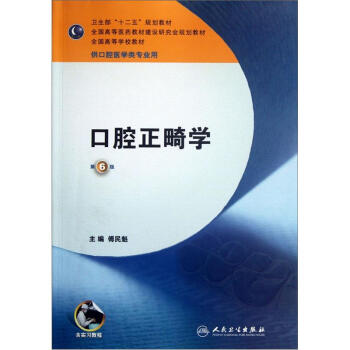






![医学影像诊断学(第4版 供医学影像学专业用 网络增值服务)/全国高等学校教材 [Diagnostic medical imaging] pdf epub mobi 电子书 下载](https://pic.qciss.net/12047327/58b623a2N8724d973.jpg)
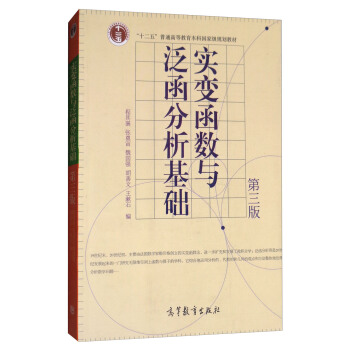
![[正版二手]高等数学同济第六版上下册 高数同济第六版 同济第6版高数 pdf epub mobi 电子书 下载](https://pic.qciss.net/19501009109/5a055589Ndd561583.jpg)
![病理生理学(第3版 供8年制及7年制“5+3”一体化临床医学等专业用) [Pathophysiology] pdf epub mobi 电子书 下载](https://pic.qciss.net/11744127/55c0aa70N12aa55e9.jpg)

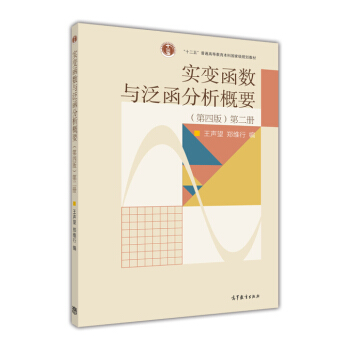
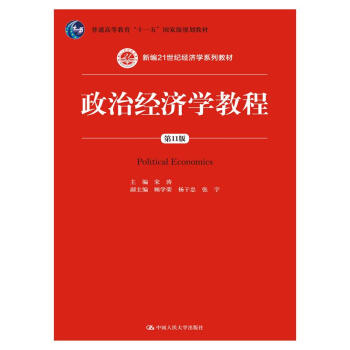



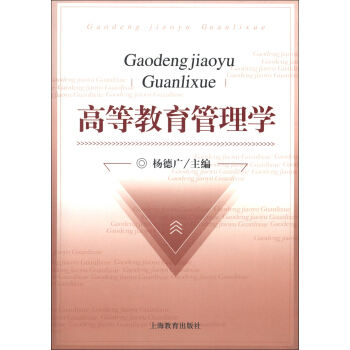
![经济数学(微积分第3版十二五普通高等教育本科国家级规划教材) [Calculus] pdf epub mobi 电子书 下载](https://pic.qciss.net/11840456/573929ebN5d863bce.jpg)